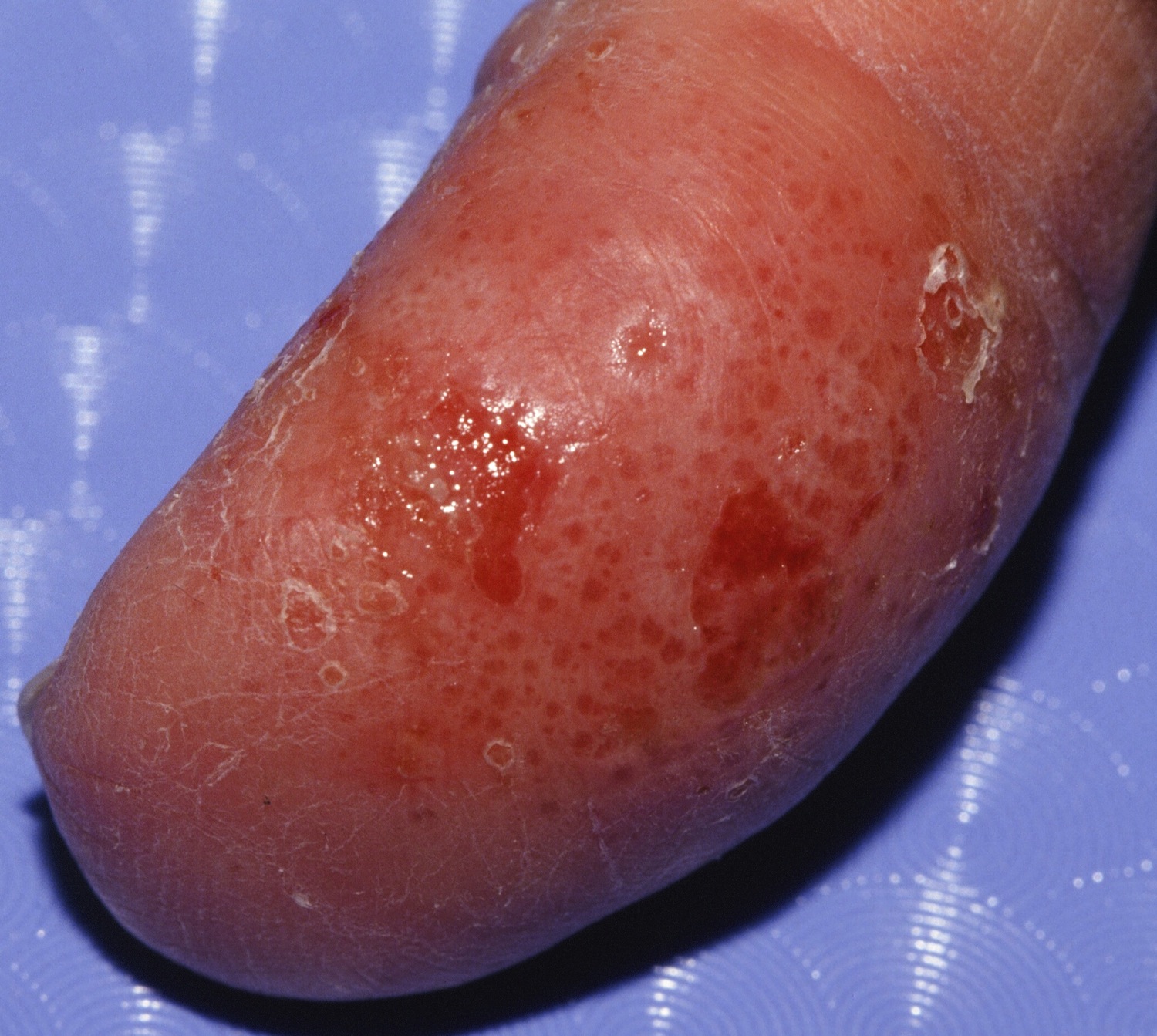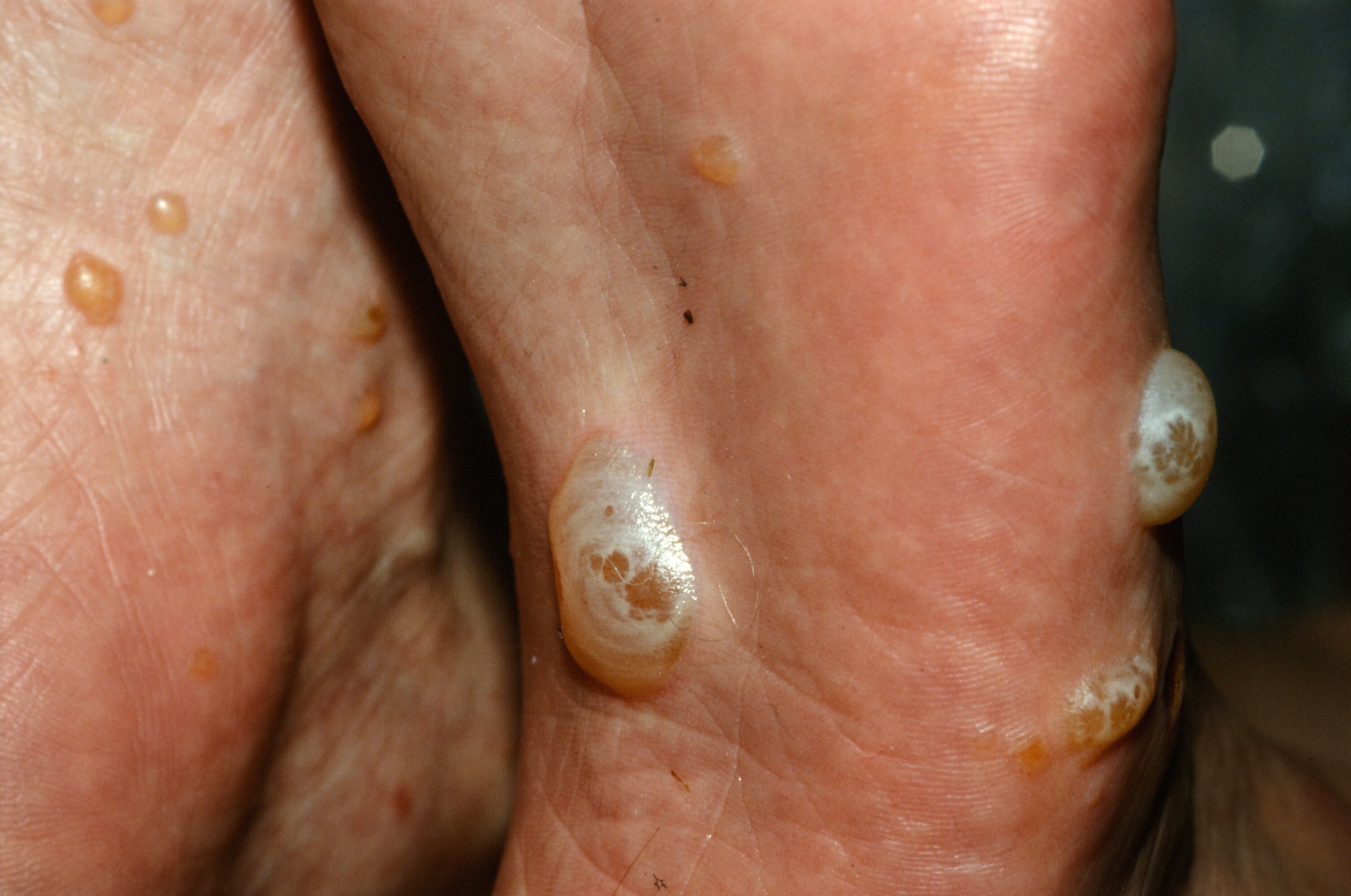
POMPHOLYX
Pompholyx is a form of hand dermatitis where vesicles are prominent. The cause is thought to be allergic in nature and a variety of things can trigger it including contact with allergens, e.g. soluble oils, perfumes, balsum.
- It may occur acutely and severely as an allergic eruption, or it may be more low-grade and recurrent, like eczema.
- Some experts feel a subset of patients flare secondary to ingestion of nickel.
- One patient of mine resisted aggressive treatment for over a year. By chance, he moved out of his Condo and within three weeks he was cured. What allergen was in the condo?
Clinical
Tapioca-like vesicles on the hands and/or feet are typical. Flares with lesions coming in crops are common. Coalescence into large blisters may rarely occur. Itching may be intense and may precede the vesicles. Scratching may alter the appearance and expose the skin to secondary infection. Sometimes, the red, scaly, eczematous areas of irritant hand dermatitis are present as well. Both conditions may occur and overlap.
Triggers
- Interdigital-plantar fungal infection. Perform a KOH and if positive, treat with oral or topical antifungal.
- Endogenous nickel (Is the patient patch test positive?). Nickel avoidance diet?
- Cosmetic and personal hygiene products. Regarding shower gel and/or shampoo, the main allergens were fragrances and preservatives.
In a series of patients with pompholyx, patch test was positive to (decreasing frequency) nickel, shower gel, chromium, fragrance, shampoo, balsam of Peru, lanolin, cobalt, thiuram, lauryl sulfate, p-phenylenediamine (PPD), fresh tobacco, formaldehyde, parabens, and octyl gallate.

A severe case with larger vesicles and bulla shown here on the feet. This often presents as an acute allergic reaction. Systemic steroids were given.

Tiny vesicles on the fingertip.
RegionalDerm
Homepage | Who is Dr. White? | Privacy Policy | FAQs | Use of Images | Contact Dr. White
It is not the intention of RegionalDerm.com to provide specific medical advice, diagnosis or treatment. RegionalDerm.com only intends to provide users with information regarding various medical conditions for educational purposes and will not provide specific medical advice. Information on RegionalDerm.com is not intended as a substitute for seeking medical treatment and you should always seek the advice of a qualified healthcare provider for diagnosis and for answers to your individual questions. Information contained on RegionalDerm.com should never cause you to disregard professional medical advice or delay seeking treatment. If you live in the United States and believe you are having a medical emergency call 911 immediately.


